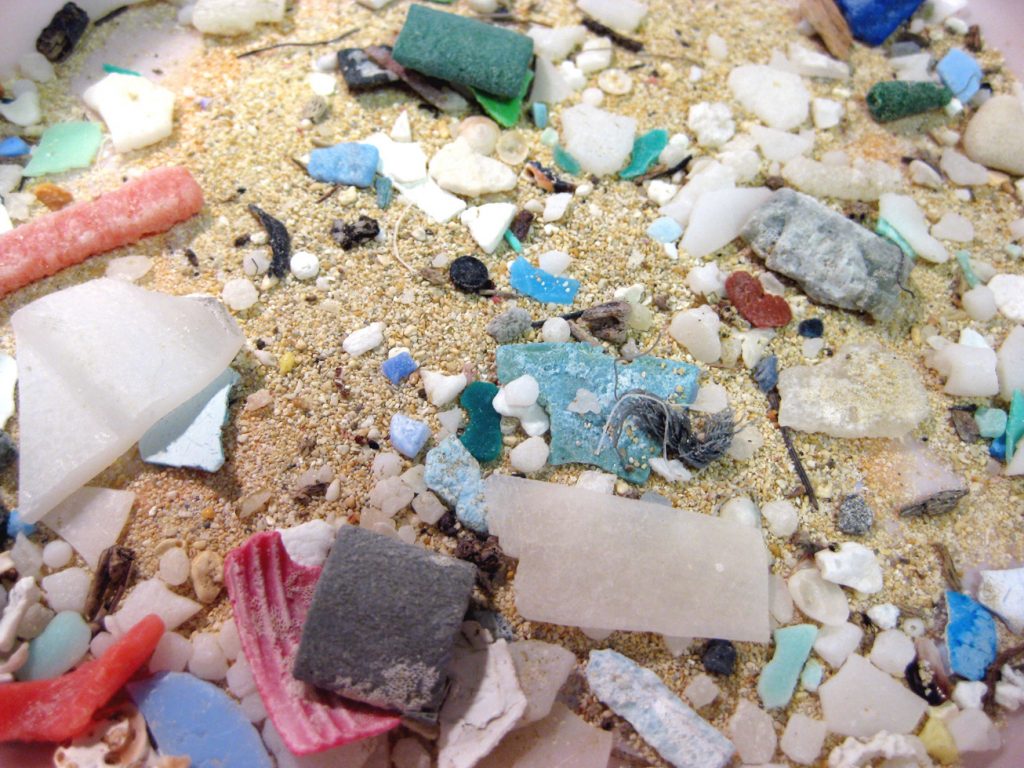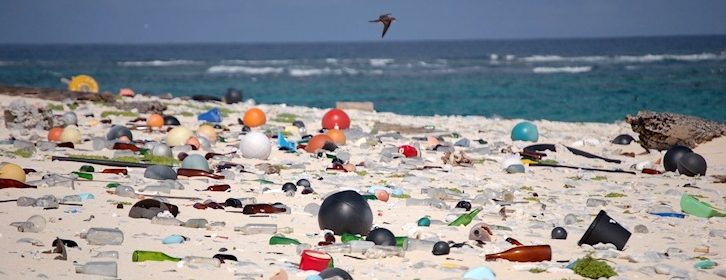
It’s almost impossible to go anywhere without seeing a piece of plastic. From your bedroom, to your workplace, vacation home, or even the beach, plastic consumes our lives.
Researchers estimate that roughly 5 to 12 million metric tons of plastic make their way into the marine environment every year. And once plastics and microplastics hit the ocean, they’re not only a threat to marine organisms, they’re also a threat to you.
What are microplastics?
Basically, microplastics are small pieces of plastics. There’s some debate about the size of microplastics, but scientists agree that the range is between five millimeters (the size of a pencil eraser) to barely visible at less than one millimeter.
The range is diverse because there are two different types. Primary microplastics consist of fibers, microbeads, and pellets, which are created to make products such as toothpaste and beauty products. Secondary microplastics occur when plastics, such as straws and plastic bottles, degrade until the debris becomes microscopic.
Although there’s been a ban on microbeads used for beauty products, it’s estimated that the U.S. disposes of over 500 million straws a day and around 30 billion plastic water bottles a year. Plastic straws are estimated to take around 400-500 years to degrade. Other microplastics can take 1000s of years to completely decompose.
How are microplastics impacting you?
Microplastics are ubiquitous in almost every environment. These plastics are being ingested by fish, mussels and other filter feeders. This is especially concerning because some of these marine organisms are being sold for human consumption. In fact, in 2015 the U.S. extracted a little over 9 billion pounds of seafood from the ocean.
Researchers are finding that microplastics are making their way up the food chain via fish and filter feeders. For instance, filter feeders such as zooplankton and other organisms lower on the food chain are consumed by small fish and mussels. These smaller fish are then eaten by even bigger fish until that fish makes it to your plate. This means that if you’re consuming fish and seafood, it’s highly likely that you’re eating microplastics and
the chemicals that either make up or come along with them.
Some microplastics are made of polyethylene and if ingested by fish, are found to cause stress.
Microplastics can also act as vectors for other chemicals and bacteria that may be harmful if consumed. For instance, a study found that persistent, bioaccumulative, toxic substances (PBTs) are absorbed by microplastics and can cause adverse health effects to organisms if consumed.
In fact, researchers indicate that eating fish containing microplastics with PBTs at certain concentration levels may cause health concerns to humans. Whether fish with microplastics have toxic chemical accumulation is dependent upon where they were extracted as well as the industries in that area. It’s possible, however, if we don’t stop microplastic pollution in our environments, seafood may not be safe to eat in the near future.
But there are ways to mitigate microplastic pollution.
What’s being done? What can you do?
There are several ways you can prevent and reduce microplastics from entering the environment. The first is to stop using single-use plastics altogether. Single-use plastics include straws, plastic bags, and plastic bottles. We are the deciding factor in whether these products get used.
We drive the demand for plastics. If we stop using certain plastics and put pressure on companies using plastics, they’ll be forced to find other alternatives. Unilever, for example, felt pressure from customers regarding its plastic use and is addressing the pressure by committing to using repurposed plastics. Although this isn’t solving the plastic epidemic, it’s a step in the right direction.
A company called Plastic Pollution Solutions is addressing the problem in a different way. I had the privilege of speaking with founder Lia Colabello, who told me that the company offers expert guidance in using alternatives to plastics and ways to implement change regarding plastics within organizations. Plastic Pollution Solutions has partnered with Costa Sunglasses and offers expert consulting on reducing plastic pollution in our oceans.
Another company that’s addressing plastic pollution and social impact is the Plastic Bank, which uses plastic as a currency. Located in poverty stricken areas such as Haiti, the Bank accepts pieces of plastic in exchange for money, food, fuel, or even WiFi. The collected plastic is broken down into pellets that are sold to companies that reuse it for applications such as 3D-printing. However, while reusing or upcycling plastic is addressing the problem, it’s not the ultimate solution.
The solution is to stop consumption of plastics altogether. This will not happen overnight; however, there are steps you can take to achieving this solution. Reducing your use of plastic, joining beach clean ups, and supporting companies that are addressing plastic pollution can all ensure a cleaner ocean in which seafood remains healthy.
